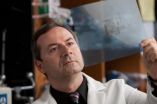(Press-News.org) A powerful solar flare has ushered in the largest space weather storm in atleast four years and has already disrupted some ground communications on Earth, said University of Colorado Boulder Professor Daniel Baker, an internationally known space weather expert.
Classified as a Class X flare, the Feb. 15 event also spewed billions of tons of charged particles toward Earth in what are called coronal mass ejections and ignited a geomagnetic storm in Earth's magnetic field, said Baker, director of CU-Boulder's Laboratory for Atmospheric and Space Physics. Such powerful ejections can cause a variety of socioeconomic and safety issues ranging from the disruption of airline navigation systems and power grids to the safety of airline crews and astronauts.
"The sun is coming back to life," said Baker, who chaired a 2008 National Research Council committee that produced a report titled "Severe Space Weather Events -- Understanding Societal and Economic Impacts." For the past several years the sun has been in its most quiescent state since early in the 20th century, said Baker.
From a scientific standpoint a class X event -- the most powerful kind of solar flare -- is exciting, said Baker, also a CU-Boulder professor in the astrophysical and planetary sciences department. "But as a society, we can't afford to let our guard down when operating spacecraft in the near-Earth environment."
According to the National Oceanic and Atmospheric Administration, several more coronal mass ejections may reach Earth's atmosphere in the next day or two.
"Human dependence on technology makes society more susceptible to the effects of space weather," Baker said. "But scientists and engineers have made great strides in recent decades regarding this phenomenon.
"We understand much more about what is happening and can build more robust systems to withstand the effects," Baker said. "It will be interesting to see how well our technological systems will withstand the rigors of space weather as the sun gets back to higher activity levels."
INFORMATION:
Baker also spearheaded a 2006 NRC report titled "Space Radiation Hazards and the Vision for Space." The report considered the effects of space weather events on human explorers venturing beyond low-Earth orbit. The National Research Council is a federal organization created by the National Academy of Sciences.
Space weather disrupts communications, threatens other technologies
2011-02-20
ELSE PRESS RELEASES FROM THIS DATE:
How couples recover after an argument stems from their infant relationships
2011-02-20
When studying relationships, psychological scientists have often focused on how couples fight. But how they recover from a fight is important, too. According to a new study published in Psychological Science, a journal of the Association for Psychological Science, couples' abilities to bounce back from conflict may depend on what both partners were like as infants.
Researchers at the University of Minnesota have been following a cohort of people since before they were born, in the mid-1970s. When the subjects were about 20 years old, they visited the lab with their romantic ...
Scientists bioengineer a protein to fight leukemia
2011-02-20
LOS ANGELES (February 18, 2011) – Scientists at the Children's Center for Cancer and Blood Diseases and The Saban Research Institute of Children's Hospital Los Angeles today announced a breakthrough discovery in understanding how the body fights leukemia. They have identified a protein called CD19-ligand (CD19-L) located on the surface of certain white blood cells that facilitates the recognition and destruction of leukemia cells by the immune system. This work represents the first report of a bioengineered version of CD19-L, a recombinant human biotherapeutic agent, ...
1 person of 1,900 met AHA's definition of ideal heart health, says University of Pittsburgh study
2011-02-20
PITTSBURGH, Feb. 18 – Only one out of more than 1,900 people evaluated met the American Heart Association (AHA) definition of ideal cardiovascular health, according to a new study led by researchers at the University of Pittsburgh School of Medicine. Their findings were recently published online in Circulation.
Ideal cardiovascular health is the combination of these seven factors: nonsmoking, a body mass index less than 25, goal-level physical activity and healthy diet, untreated cholesterol below 200, blood pressure below 120/80 and fasting blood sugar below 100, explained ...
Anti-aging hormone Klotho may prevent complications
2011-02-20
DALLAS – Feb. 17, 2011 – Low levels of the anti-aging hormone Klotho may serve as an early warning sign of the presence of kidney disease and its deadly cardiovascular complications, according to findings by UT Southwestern Medical Center researchers.
Using mice, investigators found that soft-tissue calcification, a common and serious side effect of chronic kidney disease (CKD), improves when Klotho hormone levels are restored. The study is available online in the Journal of the American Society of Nephrology.
The essential Klotho protein, which is produced by the kidneys, ...
How disordered proteins spread from cell to cell, potentially spreading disease
2011-02-20
One bad apple is all it takes to spoil the barrel. And one misfolded protein may be all that's necessary to corrupt other proteins, forming large aggregations linked to several incurable neurodegenerative diseases such as Huntington's, Parkinson's and Alzheimer's.
Stanford biology Professor Ron Kopito has shown that the mutant, misfolded protein responsible for Huntington's disease can move from cell to cell, recruiting normal proteins and forming aggregations in each cell it visits.
Knowing that this protein spends part of its time outside cells "opens up the possibility ...
A better way to diagnose pneumonia
2011-02-20
Researchers from the Georgia Institute of Technology have created a new sampling device that could prevent thousands of people worldwide from dying of pneumonia each year.
Called PneumoniaCheck, the device created at Georgia Tech is a solution to the problem of diagnosing pneumonia, which is a major initiative of the U.S. Centers for Disease Control and Prevention (CDC).
Pneumonia, an inflammation of the lungs, kills about 2.4 million people each year. The problem is particularly devastating in Africa, Southeast Asia and the Eastern Mediterranean, where a child dies ...
New model for probing antidepressant actions
2011-02-20
The most widely prescribed antidepressants – medicines such as Prozac, Lexapro and Paxil – work by blocking the serotonin transporter, a brain protein that normally clears away the mood-regulating chemical serotonin. Or so the current thinking goes.
That theory about how selective serotonin reuptake inhibitors (SSRIs) work can now be put to the test with a new mouse model developed by neuroscientists at Vanderbilt University.
These mice, described in the online edition of the Proceedings of the National Academy of Sciences (PNAS), express a serotonin transporter that ...
Enhancing nuclear security: Training and international collaboration
2011-02-20
While a world free of nuclear weapons remains a goal for governments around the world, nuclear security constitutes a major challenge for the 21st century, as recognised at the 2010 nuclear security summit in Washington. Citizens are generally aware of international efforts to prevent the proliferation of nuclear weapons, but they are often unaware of nuclear security research and the important role science in this field. A new European nuclear security training centre and enhanced international collaboration are good examples.
A recent survey on the EU´s radiological ...
Turning to nature for inspiration
2011-02-20
To build the next generation of sensors – with applications ranging from medical devices to robotics to new consumer goods – Chang Liu looks to biology.
Liu, professor of mechanical engineering and electrical engineering and computer science at Northwestern University's McCormick School of Engineering and Applied Science, is using insights from nature as inspiration for both touch and flow sensors — areas that currently lack good sensors for recording and communicating the senses.
Liu will discuss his research in a symposium at the annual meeting of the American Association ...
Plant breeding is being transformed by advances in genomics and computing
2011-02-20
The arrival of affordable, high throughput DNA sequencing, coupled with improved bioinformatics and statistical analyses is bringing about major advances in the field of molecular plant breeding. Multidisciplinary breeding programs on the world's major crop plants are able to investigate genome-wide variations in DNA sequences and link them to the inheritance of highly complex traits controlled by many genes, such as hybrid vigor. Furthermore, there has been a step-change in speed and cost-effectiveness. What previously took six generations to achieve can now be done in ...


